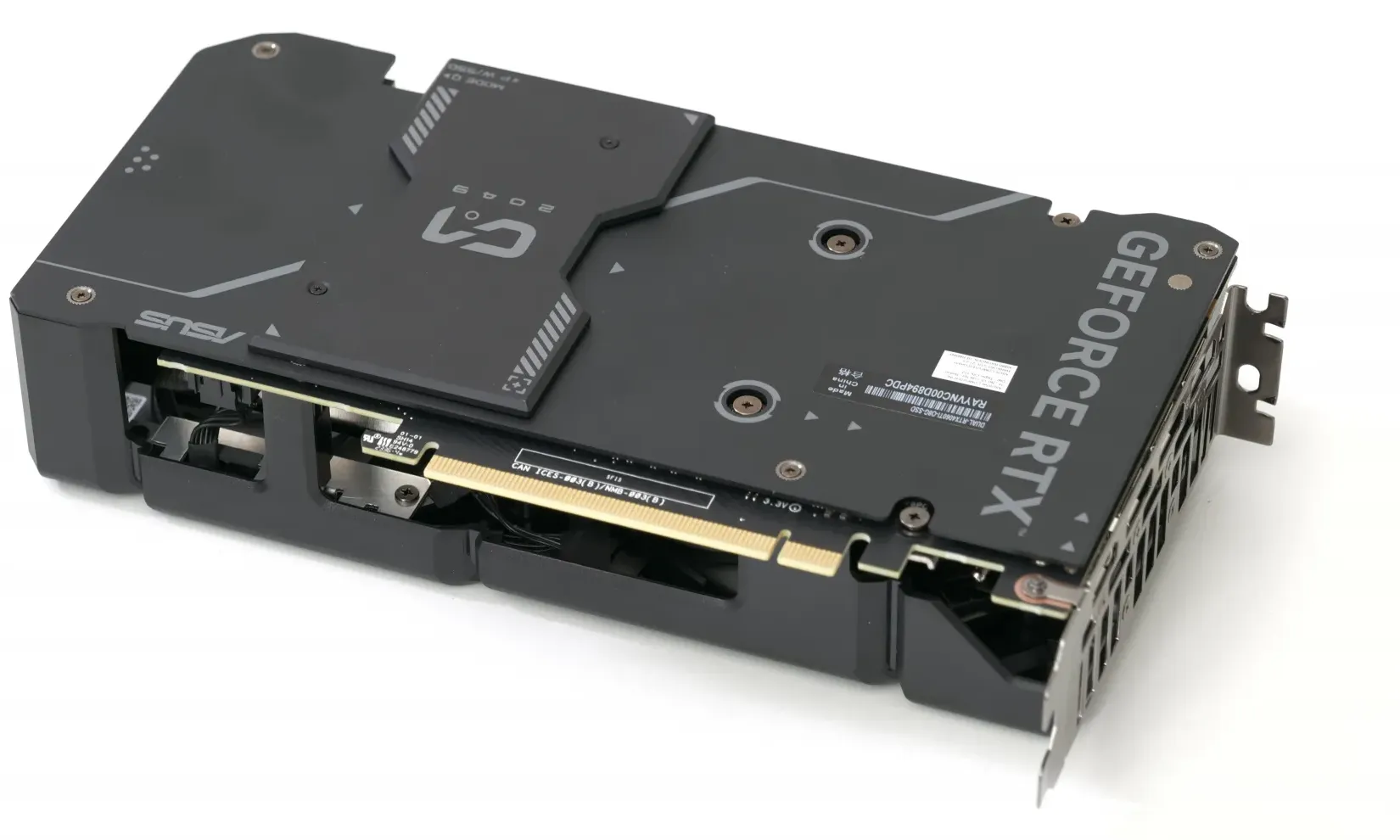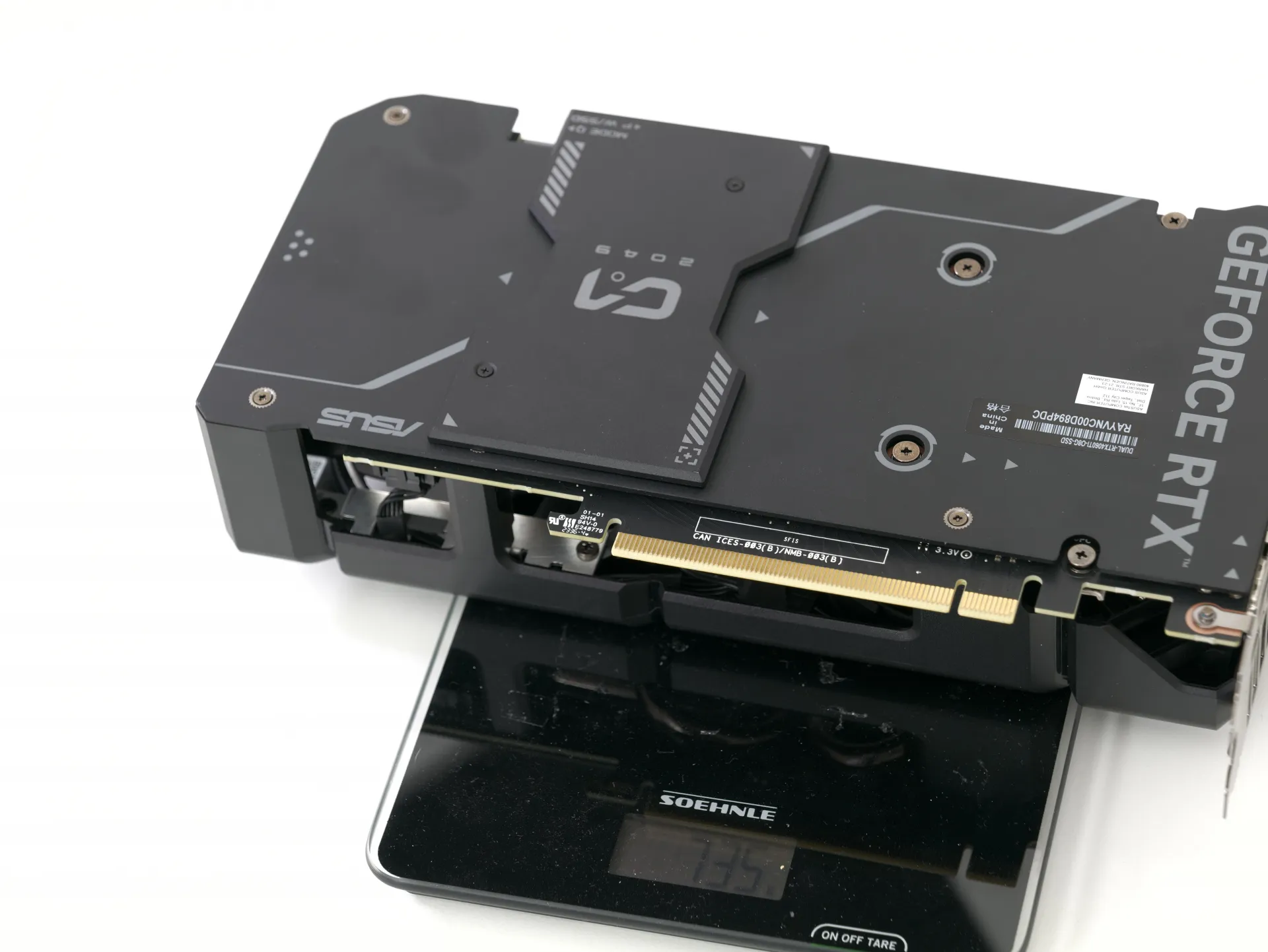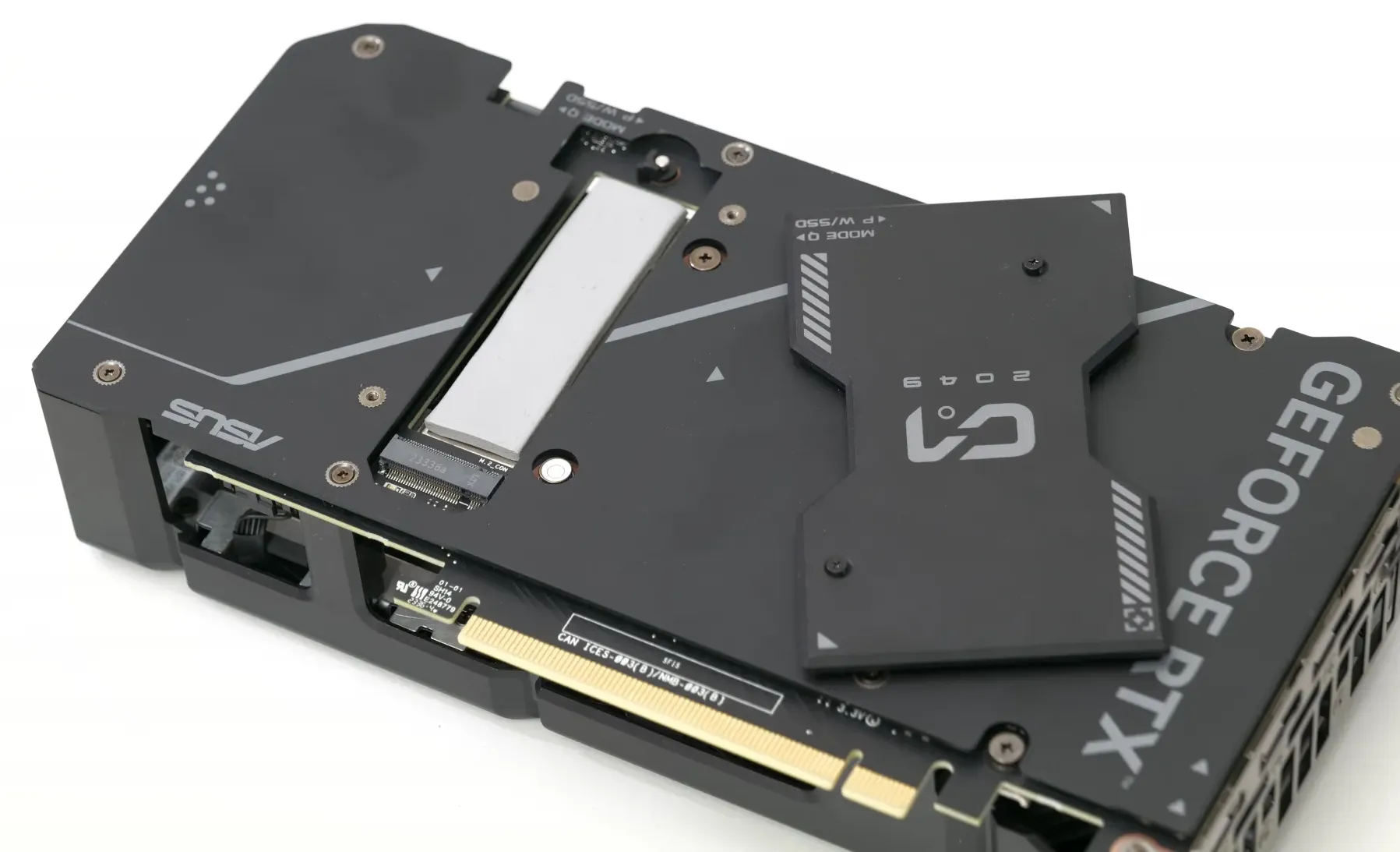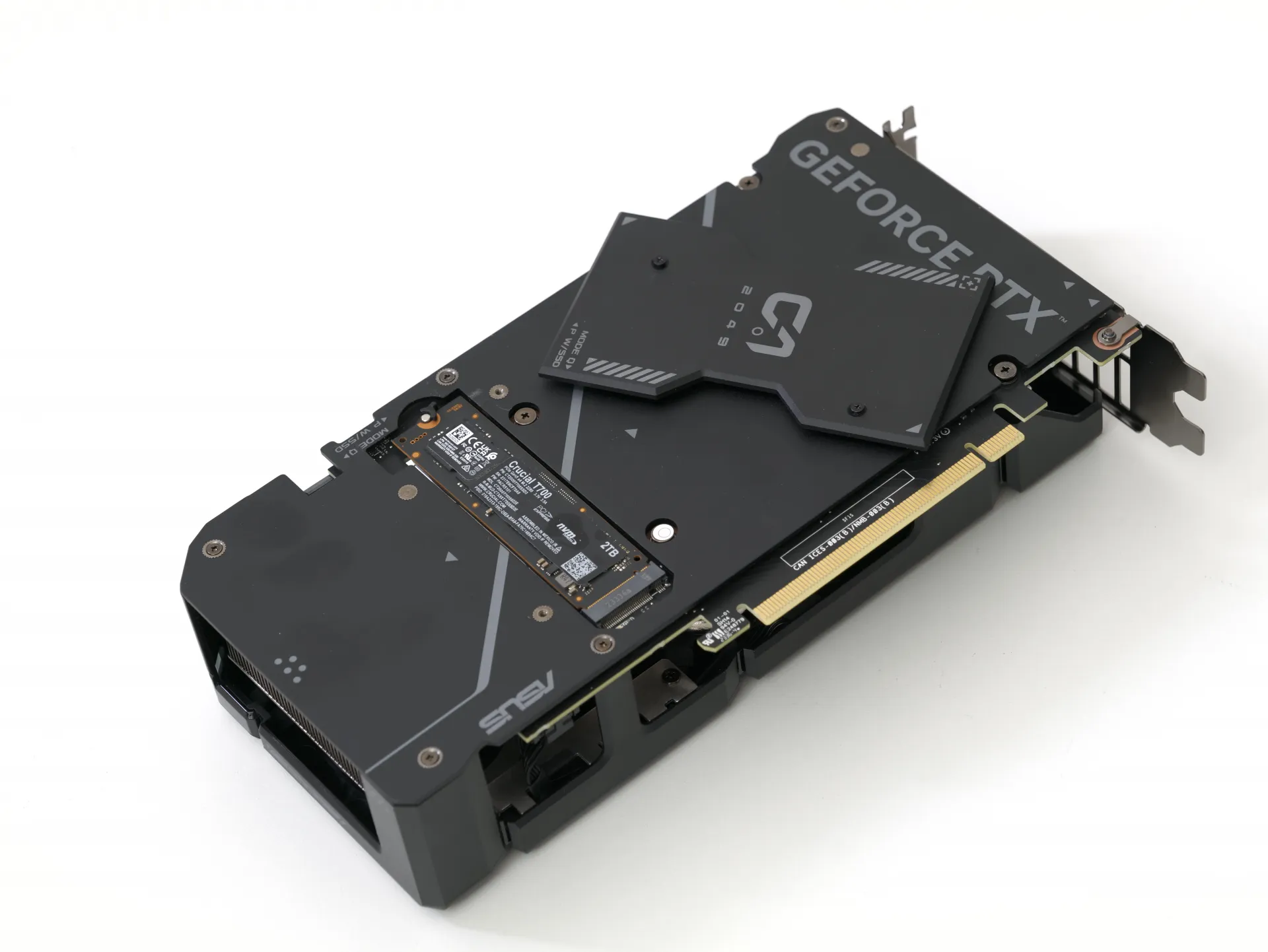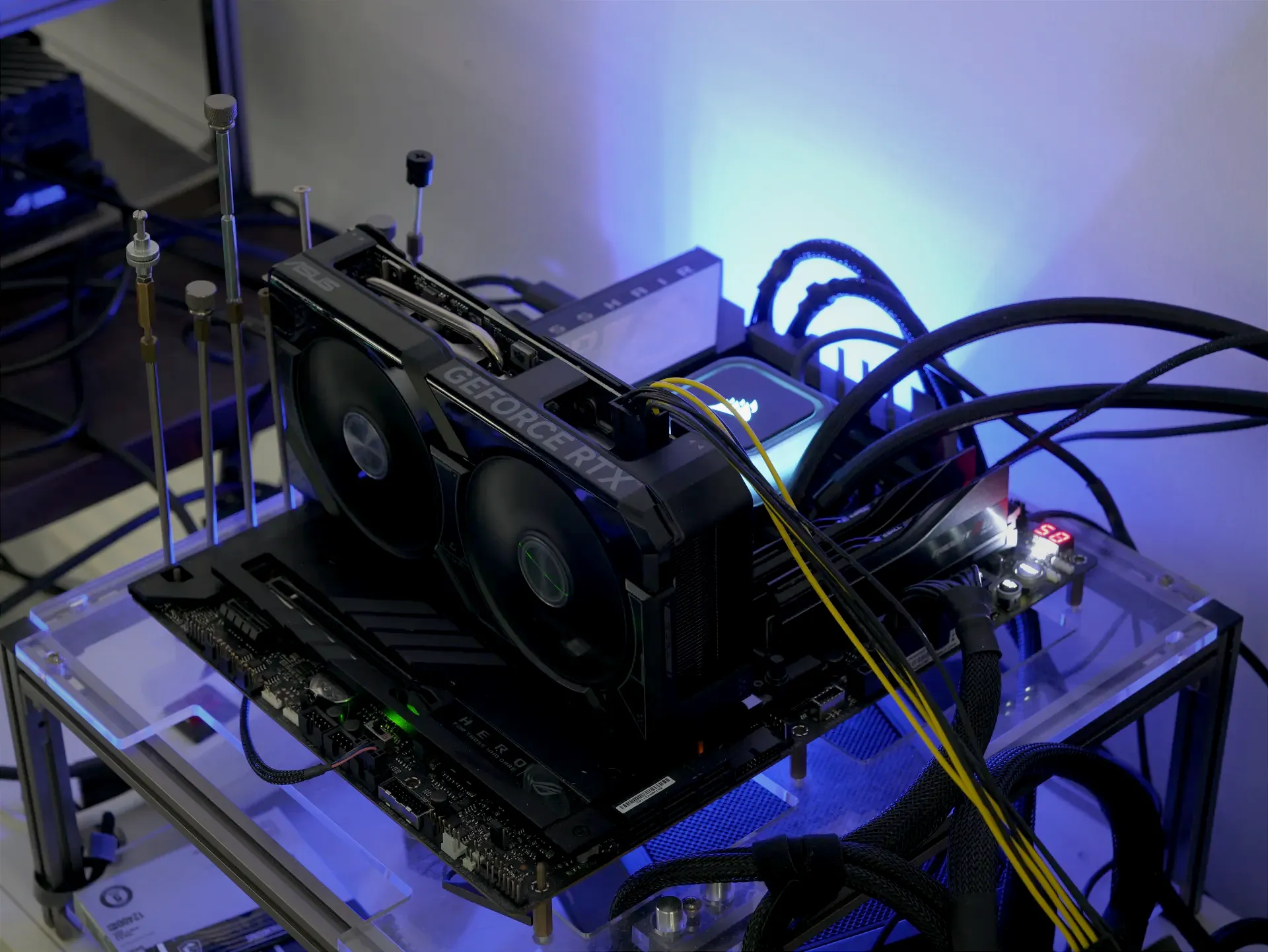Product photos
The graphics card from ASUS showcases a sturdy appearance and texture that has been utilized by the company for approximately one to two years, with minor aesthetic enhancements. The card is equipped with a backplate and has a compact form factor, measuring approximately 23cm in length.
Currently, the RTX 4000 series graphics cards do not incorporate the new DP 2.1 standard. However, they come with HDMI 2.1 and DisplayPort 1.4 ports, offering 8K 60 Hz HDR support via a single HDMI cable. The card's IO panel incorporates an air vent alongside connectors, all housed within an alloy frame that contains an aluminum fin stack.
Weighing around 735 grams, this card can be considered lightweight. Given its size of 2300mm in length and 140mm in height, effective cooling is crucial for maintaining optimal performance. The card has a dual-BIOS, which is a little redundant these days as the performance mode BIOS already is very silent, but yeah there is a silent BIOS mode to choose from as well. During idle periods, the three fans remain inactive, ensuring a quiet operation. To enhance the cooling system, the card features a vapor chamber, ten robust heatpipes that span the entire board, comprehensive heatsinks, thermal pads for all critical components, as well as dedicated heat pipes and heatsinks for memory modules. Consequently, temperature management is unlikely to present any issues.
Then that distinctive feature: an integrated M.2 slot positioned on the backplate. This slot, normally found on motherboards, is adapted here with ASUS' tool-less mounting clamp mechanism for ease of SSD installation. The design of this slot is unique; it is inverted, positioning what would typically be the upper side of an SSD facing downwards. Beneath the SSD, ASUS has strategically placed a substantial gap in the PCB to facilitate direct thermal contact between the SSD and the video card's heatsink. This setup ensures that the primary heat-generating components on the SSD are effectively cooled. Additionally, even the reverse side of the SSD, which may house flash chips in higher-capacity models, receives thermal management through a cooling pad and a metallic shield that also serves as a secondary heatsink.
Notably, the video card's x16 slot conforms to PCIe 5.0 standards, despite the RTX 4060 Ti GPU operating on PCIe 4.0 like the rest of the RTX 4000 series. This forward-thinking design allows for potential PCIe 5.0 bandwidths if an SSD supporting this standard is installed. Unfortunately for us, we could not get Gen 5.0 working.

